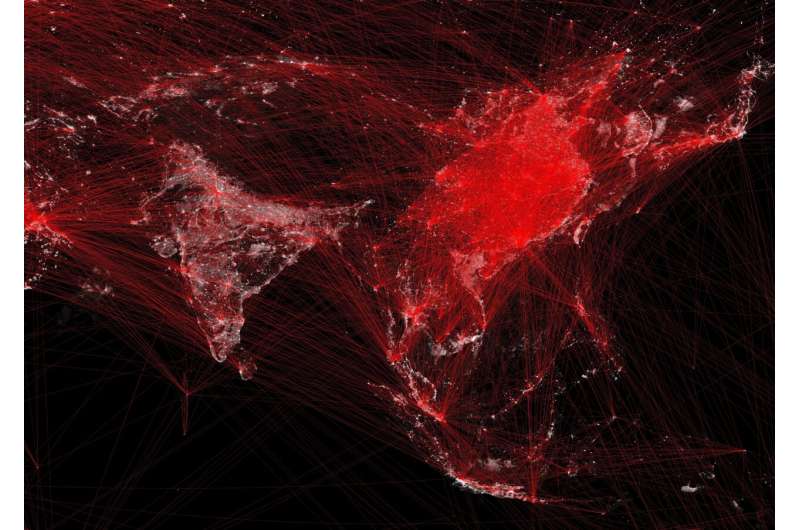Air Transport Network and Nighttime Light Intensity around Asia for 2019. Credit: Jin Murakami, with Data from ICAO Global Traffic Flow (2019) and NASA Earth Observatory (2019)
Be it for work or vacation, chances are that many will have passed through an airport. In the largest cities, the airport presents to travelers the first glimpse of a new land and a reflection of the surrounding city. Beyond first impressions, airports stand as an important economic hub for local policymakers, with a continuous flow of goods and passengers fueling the urban economy.
However, current literature on the economic impact of airport investment is primarily based on developed cities localized to North America and Europe. In these cases, airport capacity development is focused on upgrading existing infrastructure. For emerging cities in less developed countries, especially for those intending to build their first airport, the economic benefits are not as clear-cut.
Recognizing the importance of a more generalizable analysis, Assistant Professor Jin Murakami of the Singapore University of Technology and Design (SUTD) collaborated with researchers in Japan to close this gap.
In their paper "Does new airport investment promote urban economic development?: Global evidence from nighttime light data," Asst Prof Murakami highlights that developing new airport infrastructure often requires billions in capital investment, with evidence and information on long-term returns playing a key role in decision-making. The research is published in the journal Transportation Research Part A: Policy and Practice.
To conduct the study, the team first required access to city-scale statistical data across the global regions, including emerging economies in Asia and the Middle East. Previous studies on large cities used the gross domestic product (GDP) and employment rates as key indicators for economic growth. In smaller cities, however, these statistics are poor and inconsistent, and in some cases, altogether unavailable.
Inspired by other empirical studies on emerging economies, the team used nighttime light intensity (NTL) as a proxy for the degree of economic development. Urban researchers have noted that urbanization, employment, industrial production, and energy consumption activities can be tied to light emissions at night.
With modern satellite observation technologies, nighttime images over a wide span of geographical locations and time periods have become readily available. Asst Prof Murakami and his team were able to examine cities with and without new airport construction across the world at finer spatial resolution and more regular time intervals.
Modeling the relationship between airport development and economic growth proved to be a difficult task. "The two-way causal relationships between transport infrastructure investment and urban economic growth have long been debatable. It is also likely that rapid urban economic growth calls for new airport construction projects," explains Asst Prof Murakami.
To distill the "net" economic impact of new airport construction, a difference-in-differences (DID) method was applied that compares the changes in NTL over the years between similar cities that differ only by local airport construction. The team scoured more than 13,000 cities worldwide to identify suitable control groups for comparison, systematically matching each case study.
The team found that less-developed cities without airports would benefit the most from constructing their first airport. The increased accessibility to the global aviation network brings about broader economic benefits and opportunities to such communities.
The researchers suggest that new airports go beyond expanding capacity to meet air transport demand—they promote inclusive growth and connectivity to people living in remote locations.
The holistic analysis of recent airport construction projects provides new generalizable global evidence that can help small towns and cities to make pivotal decision where regional accessibility is a concern.
With their findings, Asst Prof Murakami hopes to encourage global investors, policymakers, and financial institutions to reassess the bankability or economic feasibility of airport development projects in emerging economies based on current environmental, social, and governance (ESG) investing criteria.
"This study stresses the importance of incorporating the wider economic benefits to be attained in relatively small and/or geographically remote cities, towns, and communities in airport capital investment evaluation practices for regional network connectivity and inclusive economic growth, particularly in Asia and the Middle East," emphasizes Asst Prof Murakami.
More information: Kumiko Uchida et al, Does new airport investment promote urban economic development?: Global evidence from nighttime light data, Transportation Research Part A: Policy and Practice (2024). DOI: 10.1016/j.tra.2023.103948
Provided by Singapore University of Technology and Design
























